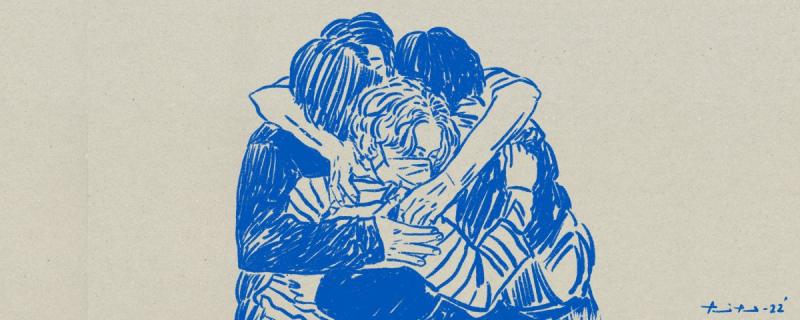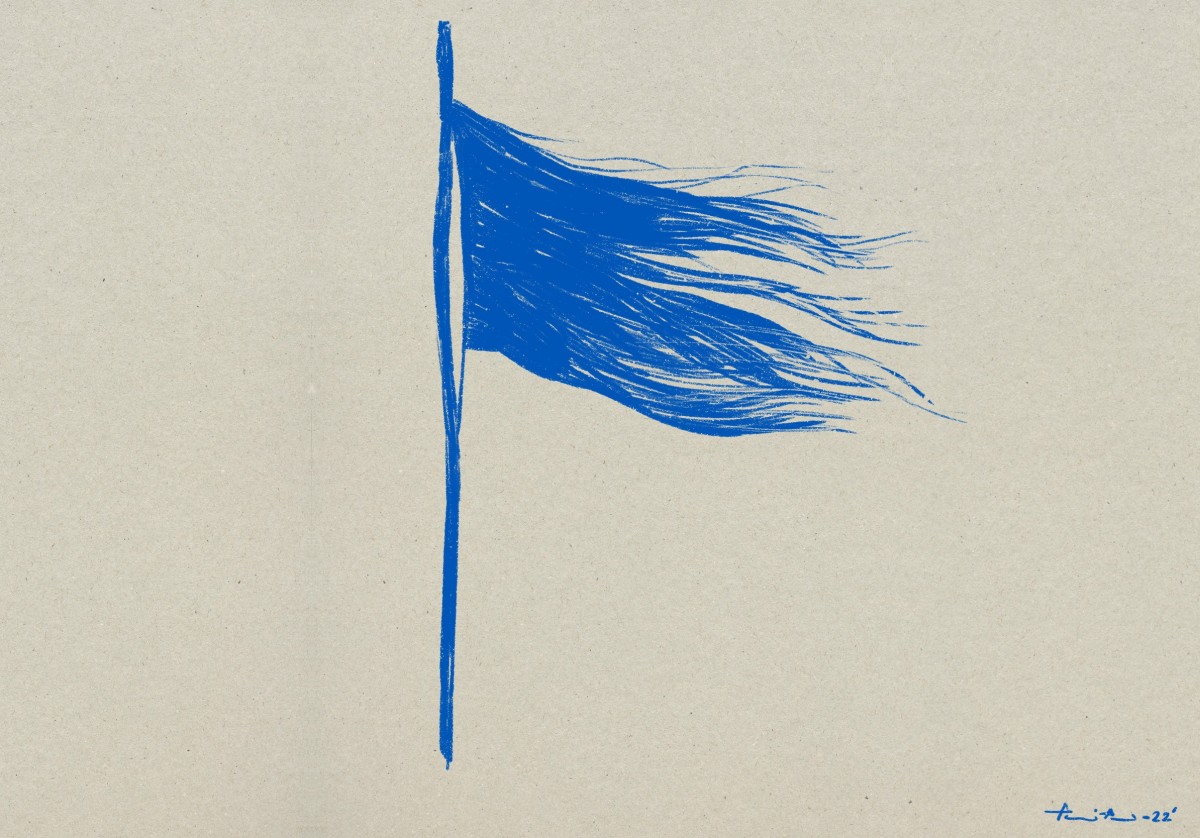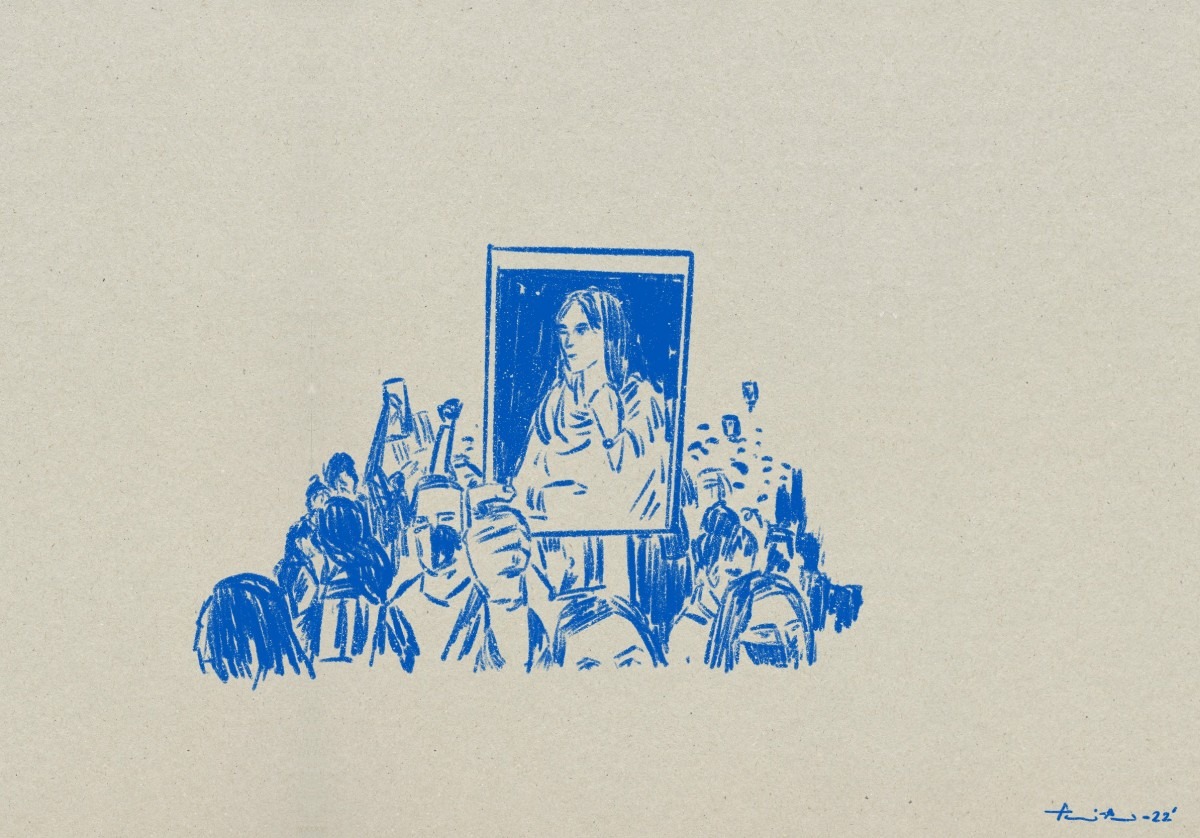As the protests persist and voices amplify, people in Iran are deploying art as a means of resistance, defiance, and dissent against the authoritarian regime.
According to the Human Rights Foundation, “4 billion people live in tyranny or a total of 54% of the world population in 95 countries.”
Though freedom of expression is a fundamental right that is constitutionally safeguarded, in the face of civil protests, dissents and threats of political subversion, it is the very immediate entity that is censored by authoritarian regimes. Media, education, and cultural properties that showcase an alternate narrative or those that seek to challenge and resist the dominant ones are often silenced, expelled, marginalized and suffer public and political scrutiny.
“How important is art as a form of protest? Very.”- Jermey Deller
Quote by Jeremy Deller
Iran and the Protests: Art as a tool of resistance, dissent and defiance in the Iranian Women’s Revolution

One of the biggest dangers to authoritarian authority is art, creativity, and freedom of expression. Art may mobilise the civic community around a cause by publicizing the abuses of power and brutalities perpetrated by dictators through its soft power.
The idea that art is an outlet for expression has long been accepted as fact. Art has a strong ability to communicate alternative narratives and varied perspectives, sometimes in a way that is subject to interpretation and other times that is more explicit and obvious. It has the power to impact, condemn, rise, provoke and revolt against the existing social hierarchies.
“The role of the artist is that of the soldier of the revolution.” –Diego Rivera
Quote by Diego Rivera
There is an inherent similarity between protests and artworks–they both are suppressed voices that reflect underlying inadequacies and injustices of the society that often gets concealed behind the utopic dominant narratives of the world. Protest artwork aids in conjuring up primal emotions in its viewers, which may in turn heighten the atmosphere of the situation and open up new dissenting avenues. It is thus, an effective means to shape the collective social consciousness, establishing networks that are often transient, and marked by their timeliness and timelessness.
It is created as a tool for expressing an individual’s resistance against those in positions of power. To complicate and oppose the established cultural boundaries and hierarchies as portrayed by those in authority, activist art encompasses aesthetic, ideological, and technological advancements.
Right from Picasso’s ‘Guernica’ to the graffiti on the streets, these pieces of art are often allegorical in nature and a commentary about everything that time witnesses. The goal of activist artists is to produce art that serves as a medium for political or social exchange, directly challenging cultural power hierarchies rather than merely referencing them.
Often repressed, prohibited, demolished, and redacted under stringent censorship of authoritarian regimes as well as democratic governments, the vitality and voices of creativity and dissent are often challenged under oppressive governments, putting forward the questions of threat to liberties of human rights and free expression.
To confront sociopolitical issues and promote public engagement as a means of enacting social change, activist art makes use of public spaces. It seeks to bring about societal transformation by putting into action representational processes that encourage dialogue, raise awareness, and empower communities and individuals.
It aims to provide visibility to the invisibilized and compels us to challenge the known, and is vital in communicating alternative reasoning of the world. Entailing works are rooted in the endeavour of addressing political and civil subjects that solicit rapid mass attention, it is a tool employed to mobilize the masses for a social or political cause.
Transient, hybrid, and interdisciplinary characteristics along with immediacy and candour make art the most accessible and widely used tool of resistance. Art itself becomes a tool of activism in the sense that it explicitly presents a contention about civilization’s dissatisfaction and cultivates resistance in devious ways.
Iran: Challenging the Autocracy–Resistance and Protests through Art
With the extensive incursion on human rights that is going on in Iran, protesters and activists have turned to art as a non-violent means to protest for a humane cause under the authoritarian regime.
A week ago, protests broke out in northwest Iran during Mahsa Amini’s funeral. A 22-year-old, Mahsa Amini was a Kurdish woman who died after going into a coma after being detained in Tehran by morality police who were enforcing the hijab dress code. According to reports, Amini was treated harshly by the morality police.
Her passing has stirred resentment over a variety of issues including personal freedom constraints in Iran, strict clothing regulations for women, and a collapsing economy due to sanctions.
The protests have seen several women participate prominently, waving and setting their veils on fire. As enraged mobs demanded the removal of Iran’s Supreme ruler Ayatollah Ali Khamenei, several others slash their hair in public. The protests in Iran that flared against the nation’s mandatory hijab law, have now become a struggle to acquire fundamental rights and liberties that have been repressed and curtailed by the authoritarian regime.
According to official television on Saturday, the week-long turmoil has claimed the lives of at least 41 individuals. It claimed that the toll was determined according to its tally and that official data had not yet been made public. In the majority of the country’s 31 provinces, protests have started.
In the face of several human rights violations– withholding the fundamental right to protest, unlawful arrests, violent crackdown on peaceful protest, dismissing the communication channels including the internet, police brutalities and illegitimate use of force, people in Iran are capitalizing on the art’s ability to inform, mobilise and impact the collective consciousness of the world.
As the campaign gains momentum, here is a series of illustrations by The Wire’s illustrator Pariplab Chakraborty as a homage to brave Iranians, resisting in the face of perpetual state repression.



Banking on the capacity of art to change the world by safeguarding civil freedoms, and bringing about a revolution, more and more people are engaging in this non-violent means to convey their discontent against the regime’s brutalities.
As the dissenting voices continue to resist the state’s oppression, getting louder with every blow, how much longer will the authoritarians refute that– “Art cannot be silenced.” For every strike with the baton, for every pellet that is fired and for every life that is sacrificed; there will be an account in these repressed pieces of art that will make its way to the collective memory of the world that cannot be suppressed.













